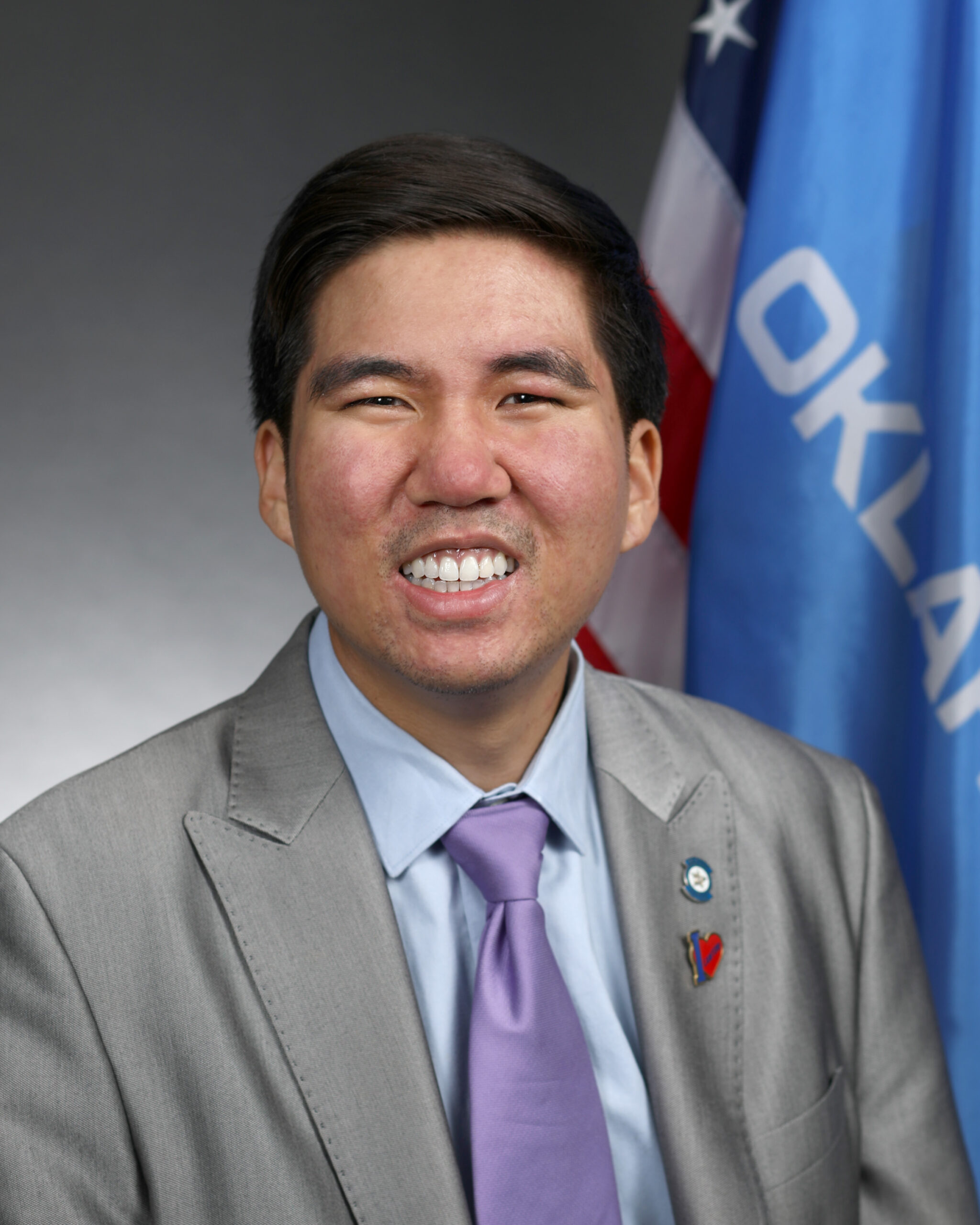Is Bipartisanship Desirable?
May 4, 2022
There’s no denying that toxic polarization has made it increasingly difficult for policymakers to work together to solve problems. Yet, we need our leaders to address the many seemingly intractable problems that our country faces: issues like climate and energy, jobs and the economy, health, or education.


Is Bipartisanship Necessary or an Obstacle to Progress in Today’s America?
By Layla Zaidane – President and Chief Executive Officer of the Millennial Action Project
There’s no denying that toxic polarization has made it increasingly difficult for policymakers to work together to solve problems. Yet, we need our leaders to address the many seemingly intractable problems that our country faces: issues like climate and energy, jobs and the economy, health, or education. We know that across the country we will continue to elect Democrats, Republicans, and Independents to serve side-by-side in our legislative bodies, and they will be tasked with removing barriers and advancing sustainable solutions to build a better future for us all. If we agree to these basic premises, then bipartisanship is not a luxury or even optional – it is absolutely necessary to get big things done.
Defining Bipartisanship
“Bipartisanship” can itself be a polarizing word these days. With multiple bipartisan bills that have resulted in lackluster results for both sides, or efforts to secure bipartisan support leading to stalled progress altogether, the baggage that comes with this word is understandable.
The majority of Americans agree that bipartisanship is preferred and necessary, with 62% of voters expressing that they want an elected leader who can compromise to get things done. Yet in practice, Americans also see this consensus-building as one-sided: nearly 80% of both parties believe the other side should be the one to compromise – not them.
The unfortunate truth is that when policy change is treated as a zero-sum game, bipartisanship is seen as a course of action in which both sides lose something in the process. Therefore, sacrificing a core value or principle for a policy win never seems truly worth it. This performative bipartisanship is a lose-lose situation. However, if we define bipartisanship as a deeper, more meaningful co-creation of new solutions, then bipartisanship becomes a win-win situation for everyone. Today, we need this latter approach to policymaking more than ever.
Inclusive Policymaking
If the former approach to policymaking can be described as “transactional bipartisanship,” then we need to reclaim what true bipartisanship means. At the Millennial Action Project (MAP), we see true bipartisanship all the time among our network of 1,600 young state and Congressional legislators. The secret? These lawmakers focus first and foremost on building relationships across lines of difference. By getting to know each other first and building trust across party lines, legislators are able to be more open-minded when they then seek to solve problems together. These relationships are integral to effectively reducing the transactional trap of bipartisanship and instead can foster a more inclusive policymaking.
One example of deep and successful bipartisanship comes from Rep. Jeramey Anderson (D). After launching the bipartisan Future Caucus in Mississippi in 2017, he and fellow caucus co-chair, Toby Barker (R), fostered authentic relationship-building among the young legislators in the group. In 2020, Rep. Anderson mobilized support to remove the Confederate iconography from the Mississippi state flag amidst the powerful racial justice movements of the summer. Rep. Anderson credited the legislation’s success to decades of activism and the important bipartisan connections of the Future Caucus. Because of their pre-existing relationships, when the opportunity arose to solve a potentially polarizing problem, the legislators were able to take swift and collective action.
Is Bipartisanship Always Desirable?
The example above illustrates the power of true bipartisanship. While transactional bipartisanship can leave much to be desired, true bipartisanship is something to strive for in every piece of legislation. Additionally, because of broad support among both policymakers and voters, solutions passed with bipartisan support tend to have more long-term staying power.
True bipartisanship requires the process to be inclusive of all ideological perspectives. It invites all opinions to the table to focus on the issue at hand, and creates a permission structure for innovation and creativity in finding solutions. This is especially important when it comes to the seemingly intractable problems for which progress has stalled due to familiar arguments and unimaginative proposals. To solve problems that have bedeviled legislators for decades, we need to invite people to think outside the box and to partner with whoever it takes to build the necessary coalitions. Through this inclusive legislating process, innovative policy solutions that are good for all parties can not only be created but passed.
Advocating for Core Values
Most leaders get into politics because they care about their communities. This is a good thing since we want elected leaders who will honestly reflect this constituency and advocate for their core values. The problem arises when these lawmakers forget that their colleagues are also advocating for their communities. In doing so, leaders are applying a “scarcity mindset” to policymaking. Instead, leaders have an opportunity to apply an “abundance mindset” to this process – intentionally building the coalitions they need to stay true to their goals.
Building consensus is a leadership skill. The most successful CEOs, Presidents, and movement builders have all succeeded in part due to their ability to unite teams, build coalitions, and lead through complexity. We should see bipartisanship as a similar skill – something that the most impactful and inspiring leaders will be able to do well. Building the muscle to find a win-win bipartisan path forward is an important part of scaling and training the next generation of leaders. Framing the ability to compromise as an asset to be gained, not as a weakness to be avoided, can help us create an environment where more problems get solved.
The Limits of Bipartisanship
By Robert Talisse – Alton Jones Professor of Philosophy, Vanderbilt University
When thinking about democracy, our minds turn to things like voting, campaigning, and speech-making. This is sensible. Elections are central to democracy, but they cannot be the whole of democracy. Elections serve the deeper ideal of a society of self-government among political equals, hence why we elect our government. Therefore, democracy is the dignifying proposal that a stable, decent, and just society is possible in the absence of royals, overlords, and masters. In a democracy, the citizens rule.
Of course, in populous modern societies, self-government cannot be direct. So, contemporary democracy involves political representation in which the people rule through elected officials who are duty-bound to represent their constituencies.
Democracy is home to multiple publics organized around competing ideas about what the government should be doing. This means that democracy is often noisy, adversarial, and frustrating. However, amidst the clamor and contestation, governing must get done. Political deadlock jeopardizes democracy.
The Allure of Bipartisanship
Given this, it’s hard to knock bipartisanship, especially when it is understood in the way Layla Zaidane proposes. Ms. Zaidane usefully contrasts “transactional” and “true” bipartisanship. Transactional bipartisanship is a “zero-sum” process by which each side of a political dispute resigns to sacrifice part of their broader agenda for the sake of reaching a collective decision. In transactional bipartisanship, legislation is treated as a bargain, with each side striving to give up as little as possible. Legislation hence cultivates cross-partisan animosity and distrust.
By contrast, true bipartisanship involves the “co-creation of new solutions” to shared problems. It avoids the bargaining model because it sees the process of legislation as beginning before lawmakers focus on their disagreements. As Ms. Zaidane describes it, true bipartisan politics starts with stakeholders getting to know one another and building mutual trust. This fosters “more inclusive policymaking” because it is rooted in processes that are “inclusive of all ideological perspectives.”
Ms. Zaidane claims that true bipartisanship is “something to strive for in every piece of legislation,” as it results in “innovative policy solutions that are good for all parties.” This model of “true bipartisanship” is attractive, yet I suspect that much of its allure derives from the fact that Ms. Zaidane contrasts it only with an independently unappealing alternative. It also strikes me that pointing to one site where true bipartisanship has succeeded in a relatively local setting is insufficient for Zaidane’s sweeping prescription that we must strive for it in every legislative situation.
Is Bipartisanship Really Inclusive?
Aside from these worries, the model is itself questionable. We must not forget that in many legislative contexts, it is not merely impossible, but also undesirable, that “all ideological perspectives” and “all opinions” be invited to the table. Ms. Zaidane claims that this maximal degree of inclusivity is required for true bipartisanship. Similarly, in a multitude of legislative contexts, every feasible option involves the loss of something deeply valuable to at least one stakeholder. There is no guarantee that “thinking outside the box” will result in anything other than the identification of new legislative possibilities that nevertheless require someone to lose what they hold dear. As Isaiah Berlin was fond of noting, there is no social world without loss. Finally, it is easy to make a view of how democracy should be conducted look appealing when one focuses only on its successes. In evaluating such proposals, we need also to look at what happens when the model breaks down; we need to assess the cost of failure.
In short, I’m skeptical of “true bipartisanship” as something to strive for “in every piece of legislation.” More generally, I see bipartisanship as of limited value when thinking about prevailing democratic dysfunctions.
In my view, calls for bipartisanship tend to focus on the wrong thing. They look to the behavior of elected officials rather than to the dispositions of the citizens themselves. Frequently, a politician’s behavior is best understood as a reaction to the perceived dispositions of their likely voters. They’re trying to get reelected, after all. Although the dysfunctions of partisanship, incivility, and inflexibility are most legible to us when magnified on the political stage, their root causes lie within the citizenry. Calls for bipartisanship tend to deflect responsibility away from the people. However, fixing democracy starts with us.
There is No Social World Without Loss
Ms. Zaidane cites important data showing that although the electorate tends to claim to value political compromise, they also embrace a lopsided view about who must be concessive. It turns out that when citizens say they want more civility and cooperation, they actually want the other side to yield. That is, they place the blame for political toxicity squarely on their partisan opponents, who they systematically construe as extreme, unpatriotic, untrustworthy, and dangerous.
The escalation of cross-partisan animosity among ordinary citizens is puzzling, as it outstrips disputes over public policy. In other words, despite their intensifying negative attitudes towards affiliates of the opposing party, the citizenry is no more divided over issues than they were thirty years ago. In fact, on certain central issues, such as same-sex marriage and abortion, the divide among the citizenry has eased. The trouble is that we mistakenly believe that our partisan rivals are extreme, uncompromising, and divested from democratic norms. We systematically misperceive our fellow citizens.
As I argue in my two recent books, Overdoing Democracy and Sustaining Democracy, these misperceptions are the expected results of prominent trends in the United States that have transformed our partisan affiliations into comprehensive lifestyles, what Lilliana Mason has called “mega-identities.” When calls to partisan loyalty saturate the entirety of our social lives, cognitive forces amplify our investment in marking and preserving the distinction between partisan friends and foes. This promotes distorted views of both.
Disrupting Partisanship
Consequently, when we propose “bipartisanship” as a remedy for toxic partisanship among lawmakers, we are starting our diagnosis in the wrong place. Dysfunctional behavior on the part of elected officials is better seen as a response to incentives set by their base voters. As long as the citizenry is divided into two distinct lifestyles, each distrustful and contemptuous of the other, we should expect politicians to exaggerate and amplify their hostility toward the other side. It’s a winning electoral strategy.
That said, it’s crucial for elected officials to move beyond the “zero-sum” vision of democratic legislation. If we seek a politics of non-transactional bipartisanship, we must begin elsewhere, by disrupting the ways in which partisan affiliation has infiltrated the whole of social life. With that done, we may find that we still despise our partisan rivals, but we’ll be less pleased by that fact and less eager to reward politicians who capitalize on our animosity.






Join 1,900+ BIPARTISAN LEADERS NATIONWIDE
Be a part of a network of lawmakers committed to governing effectively, passing more representative public policy, and increasing public trust in democracy.